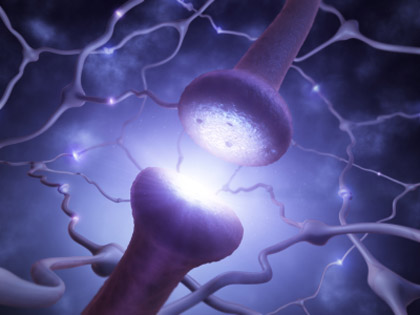Effects on Human Health: Electromagnetic & Radiofrequency Fields
For more than 50 years, the American Academy of Environmental Medicine (AAEM) has been studying and treating the effects of the environment on human health. In the last 20 years, AAEM physicians began seeing patients who reported that electric power lines, televisions and other electrical devices caused a wide variety of symptoms. By the mid-1990s, it became clear that patients were adversely affected by electromagnetic fields and becoming more electrically sensitive. In the last five years, with the advent of wireless devices, a massive increase in radiofrequency (RF) exposure from wireless devices has been occurring as well as reports of hypersensitivity and diseases related to electromagnetic field and RF exposure. Multiple studies correlate RF exposure with diseases, such as cancer, neurological disease, reproductive disorders, immune dysfunction and electromagnetic hypersensitivity.
The electromagnetic wave spectrum is divided into ionizing radiation, such as ultraviolet and X-rays, and non-ionizing radiation, such as ultrasound and radiofrequency (RF), which includes WiFi, cell phones and Smart Meter wireless communication. It has long been recognized that ionizing radiation can have a negative impact on health. However, the effects of non-ionizing radiation on human health recently have been seen. Discussions and research of non-ionizing radiation effects centers around thermal and non-thermal effects. According to the FCC and other regulatory agencies, only thermal effects are relevant regarding health implications and, consequently, exposure limits are based on thermal effects only.1
While it was practical to regulate thermal bioeffects, it was also stated that non-thermal effects are not well understood and no conclusive scientific evidence points to non-thermal based negative health effects.1 Further arguments are made with respect to RF exposure from WiFi, cell towers and smart meters that, due to distance, exposure to these wavelengths are negligible.2 However, many in vitro, in vivo and epidemiological studies demonstrate significant harmful biological effects occur from non-thermal RF exposure and satisfy Hill’s criteria of causality.3 Genetic damage, reproductive defects, cancer, neurological degeneration and nervous system dysfunction, immune system dysfunction, cognitive effects, protein and peptide damage, kidney damage and developmental effects have all been reported in peer-reviewed scientific literature.
Genotoxic effects from RF exposure, including studies of non-thermal levels of exposure, consistently and specifically show chromosomal instability, altered gene expression, gene mutations, DNA fragmentation and DNA structural breaks.4-11

© iStockphoto.com/spanteldotru | Closeup of the synapse transmitting signal along neuron network.
A statistically significant dose response effect was demonstrated by Maschevich et al., who reported a linear increase in aneuploidy as a function of the Specific Absorption Rate (SAR) of RF exposure.11 Genotoxic effects are documented to occur in neurons, blood lymphocytes, sperm, red blood cells, epithelial cells, hematopoietic tissue, lung cells and bone marrow. Adverse developmental effects due to non-thermal RF exposure have been shown with decreased litter size in mice from RF exposure well below safety standards.12 The World Health Organization has classified RF emissions as a group 2 B carcinogen.13 Cellular telephone use in rural areas was also shown to be associated with an increased risk for malignant brain tumors.14
The fact that RF exposure causes neurological damage has been documented repeatedly. Increased blood-brain barrier permeability and oxidative damage, which are associated with brain cancer and neurodegenerative diseases, have been found.4,7,15-17 Nittby et al. demonstrated a statistically significant dose-response effect between non-thermal RF exposure and occurrence of albumin leak across the blood-brain barrier.15 Changes associated with degenerative neurological diseases, such as Alzheimer’s, Parkinson’s and Amyotrophic Lateral Sclerosis (ALS) have been reported.4-10 Other neurological and cognitive disorders, such as headaches, dizziness, tremors, decreased memory and attention, autonomic nervous system dysfunction, decreased reaction times, sleep disturbances and visual disruption have been reported to be statistically significant in multiple epidemiological studies with RF exposure occurring non-locally.18-21
Nephrotoxic effects from RF exposure also have been reported. A dose response effect was observed by Ingole and Ghosh in which RF exposure resulted in mild to extensive degenerative changes in chick embryo kidneys based on duration of RF exposure.24 RF emissions have also been shown to cause isomeric changes in amino acids that can result in nephrotoxicity as well as hepatotoxicity.25
Electromagnetic field (EMF) hypersensitivity has been documented in controlled and double blind studies with exposure to various EMF frequencies. Rea et al. demonstrated that under double blind placebo controlled conditions, 100 percent of subjects showed reproducible reactions to the frequency to which they were most sensitive.22 Pulsed electromagnetic frequencies were shown to consistently provoke neurological symptoms in a blinded subject while exposure to continuous frequencies did not.23
Although these studies clearly show causality and disprove the claim that health effects from RF exposure are uncertain, another mechanism exists that proves electromagnetic frequencies, including radiofrequencies, can negatively impact human health. Government agencies and industry set safety standards based on the narrow scope of Newtonian or “classical” physics reasoning that effects of atoms and molecules are confined in space and time. This model supports the theory that a mechanical force acts on a physical object and thus, long-range exposure to EMF and RF cannot have an impact on health if no significant heating occurs. However, this is an incomplete model. A quantum physics model is necessary to fully understand and appreciate how and why EMF and RF fields are harmful to humans.26,27 In quantum physics and quantum field theory, matter can behave as a particle or wave with wave-like properties.

© iStockphoto.com/Pgiam |DNA test sequence for research and science.
Matter and electromagnetic fields encompass quantum fields that fluctuate in space and time. These interactions can have long-range effects, which cannot be shielded, are non-linear and by their quantum nature have uncertainty. Living systems, including the human body, interact with the magnetic vector potential component of an electromagnetic field, such as the field near a toroidal coil.26,28,29 The magnetic vector potential is the coupling pathway between biological systems and electromagnetic fields.26,27 Once a patient’s specific threshold of intensity has been exceeded, it is the frequency that triggers the patient’s reactions.
Long range EMF or RF forces can act over large distances setting a biological system oscillating in phase with the frequency of the electromagnetic field so it adapts with consequences to other body systems. This also may produce an electromagnetic frequency imprint into the living system that can be long lasting.26,27,30 Research using objective instrumentation has shown that even passive resonant circuits can imprint a frequency into water and biological systems.31 These quantum electrodynamic effects do exist and may explain the adverse health effects seen with EMF and RF exposure. These EMF and RF quantum field effects have not been adequately studied and are not fully understood regarding human health.
Because of the well documented studies showing adverse effects on health and the not fully understood quantum field effect, AAEM calls for exercising precaution with regard to EMF, RF and general frequency exposure. In an era when all society relies on the benefits of electronics, we must find ideas and technologies that do not disturb bodily function. It is clear that the human body uses electricity from the chemical bond to the nerve impulse and obviously this orderly sequence can be disturbed by an individual-specific electromagnetic frequency environment. Neighbors and whole communities are already exercising precaution, thus demanding abstention from wireless in their homes and businesses.
Furthermore, the AAEM asks for:
- an immediate caution on Smart Meter installation due to potentially harmful RF exposure,
- accommodation for health considerations regarding EMF and RF exposure, including exposure to wireless Smart Meter technology,
- independent studies to further understand the health effects from EMF and RF exposure,
- recognition that electromagnetic hypersensitivity is a growing problem worldwide,
- understanding and control of this electrical environmental bombardment for the protection of society,
- consideration and independent research regarding the quantum effects of EMF and RF on human health and
- use of safer technology, including for Smart Meters, such as hard-wiring, fiber optics or other non-harmful methods of data transmission.




























